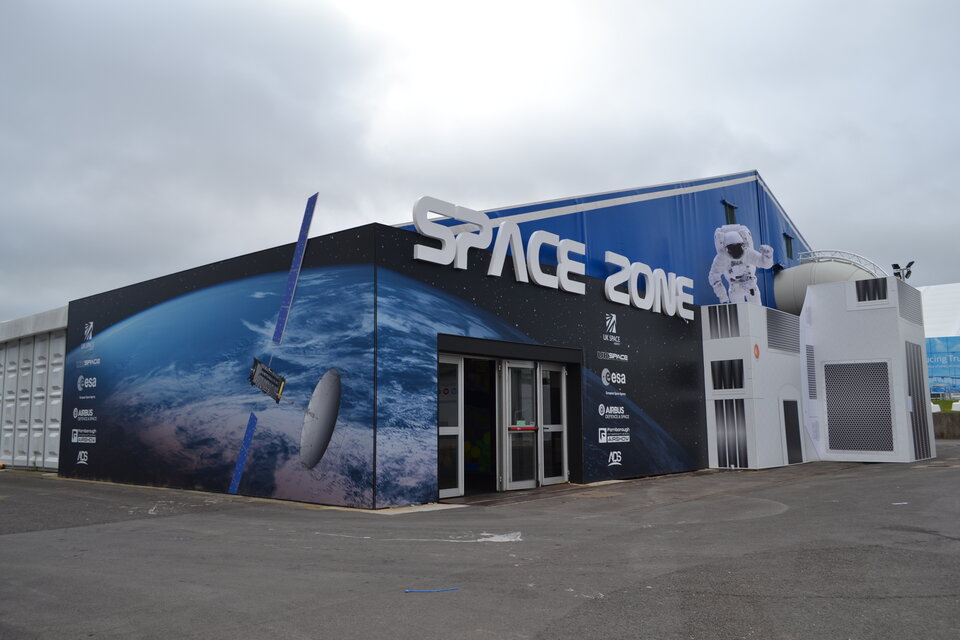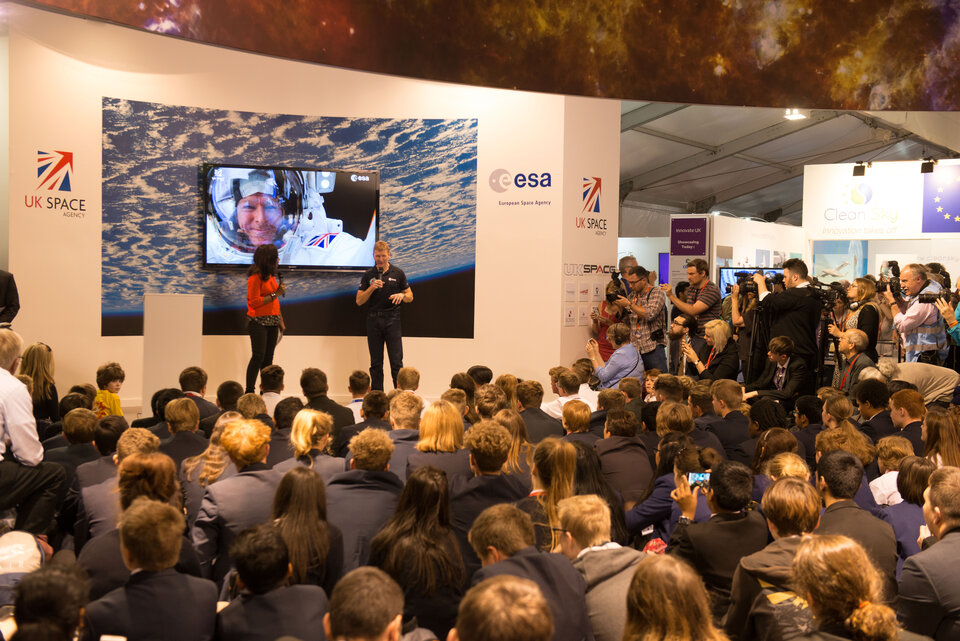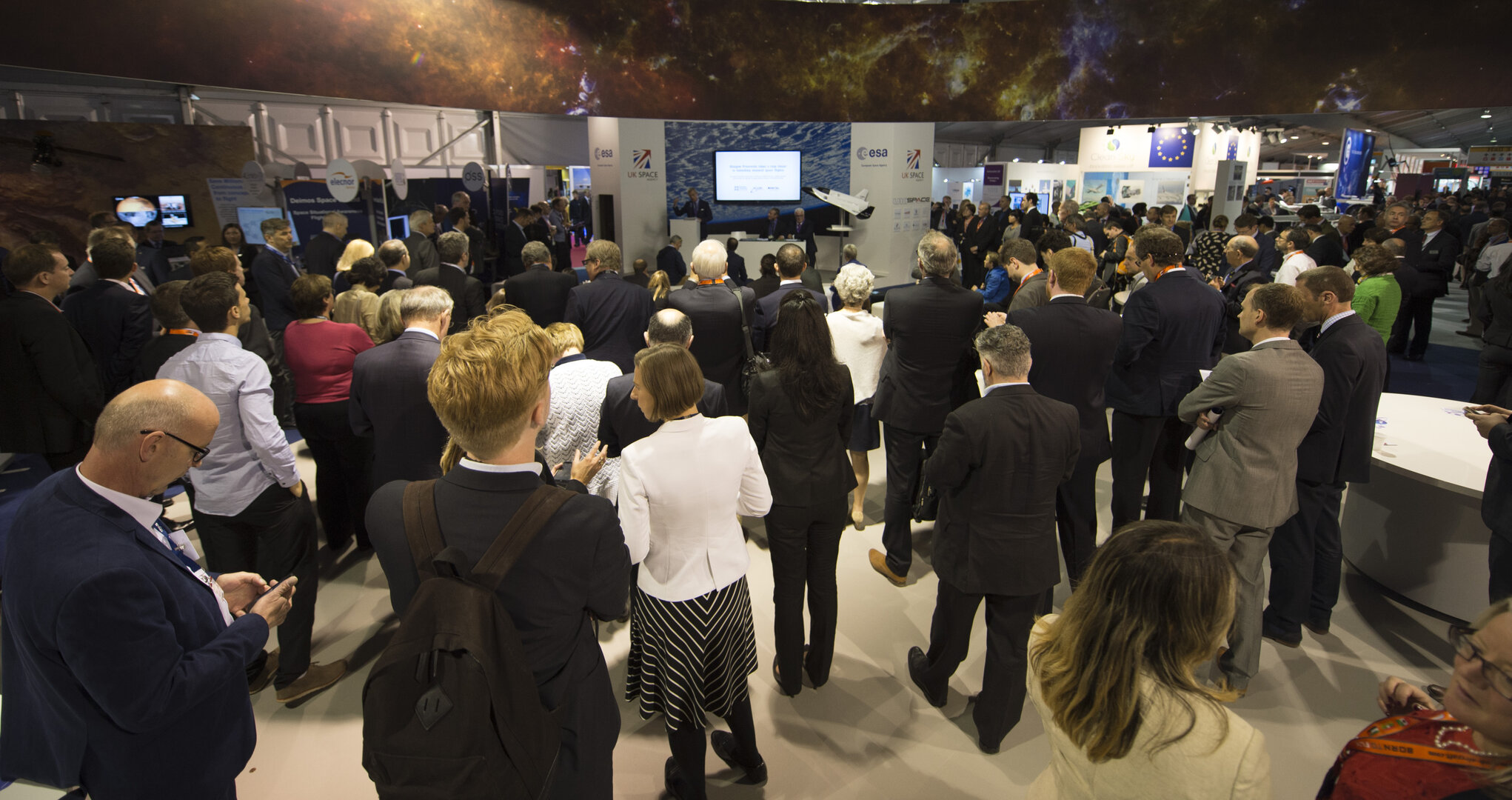ESA at the Farnborough airshow
ESA is exhibiting at the Farnborough International Air Show in the UK on 11–17 July.
Farnborough is one of the world’s largest aerospace trade shows. It brings together key players from the international aerospace community, industry, space agencies and trade visitors interested in discovering the latest developments in aerospace and new business opportunities.
A joint exhibition stand for ESA, the UK Space Agency and UK space industry located in the Space Zone in Hall 3 reflects the wealth of ESA and UK national programmes across all space domains, focusing on recent mission results and upcoming launches.
The Space Zone features activities of ESA’s European Centre for Space Applications and Telecommunications – ECSAT in the UK – which focuses on telecommunications, integrated applications, climate science and technology.

ECSAT develops commercial space-based products, services and applications and fosters links with non-space sectors. Experts will be on hand to discuss these activities.
The Integrated Applications Promotion programme supports the development of space-enabled services for a wide range of market sectors. To demonstrate, BarnardMicrosystems will feature their InView flight simulator which incorporates satellite-based communication, drone avoidance and payload management and carrying capabilities.
Space-based services for aviation, including the Iris project, for the next-generation European Air Traffic Management system as part of the Single European Skies initiative, SESAR, are explained.
These new services are underpinned by Europe’s Galileo satellite navigation constellation, with 18 satellites in orbit by the end of this year. Once complete, the system will consist of 24 operational satellites and the ground infrastructure for the provision of positioning, navigation and timing services.
ESA’s public–private partnerships with satellite operators and industry promote the sharing of expertise and risk, which opens up new markets. The Telecommunications area will feature the SmallGEO platform that will fly the Hispasat 36W-1 mission this year.
The European Data Relay System (EDRS) is the most sophisticated laser communication network ever designed. Dubbed the ‘SpaceDataHighway’, EDRS will help Earth-observing satellites to transmit large quantities of potentially life-saving data down to Europe in near-real time. Its first customers are the Sentinels of the Copernicus system.
An overview of these missions, services and applications will be presented in an audiovisual display.
Four Earth Explorer satellites now in orbit are enabling the scientific community to study the links between the atmosphere, biosphere, hydrosphere, cryosphere and interior, and the effect of human activity on Earth’s natural balance. The Earth Explorers are advancing our understanding of how Earth works and contributing essential climate variables to study climate-change issues.
The exhibition highlights how breakthroughs in technology and science have brought us greater knowledge of the Universe, of our planet and its unique place in the Solar System.
An area is dedicated to ESA’s ground-breaking Rosetta mission that travelled deep into the Solar System to rendezvous with a comet. In 2014 it became the first ever spacecraft to orbit and land on a comet. It is now providing scientists with unprecedented data to help understand whether these mysterious objects brought life to Earth.
On 30 September Rosetta is set to complete its mission in a controlled descent to the surface of its comet as they head back out towards the orbit of Jupiter.
Because of its physical similarities with Earth, Mars is a primary target for the search for life in the Solar System. Scale models will show the three elements of ESA’s ExoMars missions in cooperation with the Russian space agency. Launched in March 2016, the ExoMars Trace Gas Orbiter is well on its way to rendezvous with the Red Planet, where its Schiaparelli lander will demonstrate the technology needed to make a controlled landing on the planet this October.

ESA astronaut Tim Peake, recently returned from his mission on the International Space Station, produced a wealth of scientific data through his experiments on board. The Space Zone shows the cutting-edge technology developed in Europe that is now flying on the Station.
A model of the European Service Module for Orion, NASA’s next-generation exploration spacecraft that will send astronauts on missions beyond the Moon, is also displayed. The module relies on technologies developed for ESA’s ATV supply vehicle. Sitting below the crew capsule, it will provide propulsion, power, thermal control, water and air.
Technology development lies at the heart of ESA’s activities, helping European industry to improve its competitiveness worldwide. An excellent example is the Proba-3 mission, which will demonstrate precision formation-flying techniques in addition to studying the Sun




